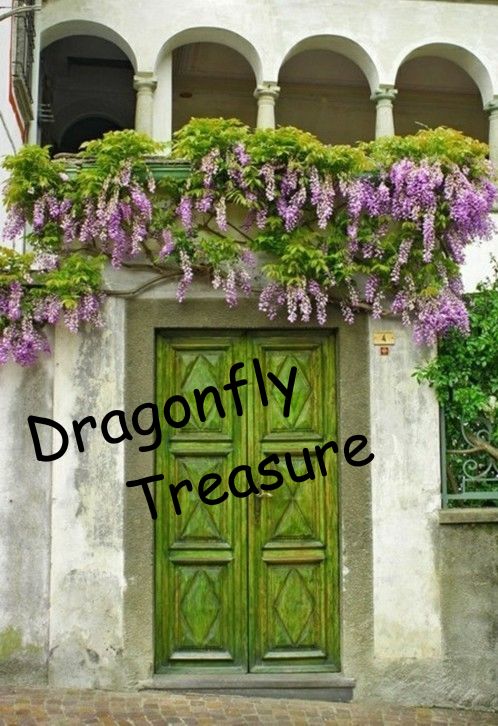
WHY GO ORGANIC?
''Pesticide use in agriculture is down slightly, from 948 million pounds in 2000 to 877 million pounds in 2007. But that's only about 1% per year, and still close to a billion pounds of toxic chemicals intentionally introduced into the environment and our food supply each year.
These are a major threat to groundwater in every state and the problem keeps growing!
It's also a major health concern.
More than 3.4 million people suffer from medically related side effects from the use of pesticides. Some of the immediate side effects include dizziness, nausea, headaches, low energy and loss of memory. Tests and research have proven that many forms of cancer are caused by 65% of all the pesticides.
The herbicide glyphosate has more than doubled in use, from 85-90 million pounds in 2001 to 180-185 million pounds in 2007. According to a report from the Organic Center, this increase is likely a reflection of the rising popularity of Monsanto's RoundUp Ready genetically modified crops. (Glyphosate is the active ingredient of RoundUp.)'' Mary's Heirloom Seeds
(Yes, these statistics are a little outdated, but you get my drift)

First lets identify natural/organic pest control.
It involves NO chemicals.
Some ways of natural pest control include: predators, parasites, competitors, companion planting, safe insecticidal sprays, etc.
Bugs are a very important part of the garden. Don't try to fight them all, learn to work with and around them. There will always be good and bad bugs present in your garden, whether you like it or not. We have to learn to work with nature, not against it.

Companion Planting
Companion Planting is planting certain plants near each other which reduces pest infestation or improves the growth of nearby plants.
Some examples:
Tomatoes
Peppers
Cucumbers, eggplant, tomato, Swiss chard and squash. Herbs to plant near them include: basil, oregano and rosemary.
Squash
Beans, corn, cucumbers, icicle radishes, melon, onions, pumpkin, Borage, Dill, Marigolds, Nasturtium, Oregano
Beans
Carrots, celery, chards, corn, eggplant, peas, brassicas, beets, radish, strawberry and cucumbers
Cucumber
Beans, Corn, peas, beets, radishes, carrots, Dill and Nasturtiums
Eggplant
Beans, peas, peppers, spinach, tarragon, thyme and marigold
Radish
Beet, bush beans, pole beans, carrots, cucumber, lettuce, melons, nasturtium, parsnip, peas, spinach and members of the squash family.
Swiss Chard
Bean, cabbage family, tomato, onion and roses
Corn
Beans, cucumber, melons, morning glory, parsley, peanuts, peas, potato, pumpkin, soybeans, squash and sunflower
Onion
Planting chamomile with onions improves their flavor. Other companions are carrot, leek, beets, strawberries, brassicas, dill, lettuce and tomatoes. Intercropping onions and leeks with your carrots confuses the carrot and onion flies.

DIY Recipes for Organic Pest Control
*Please remember that some (not all) organic sprays can harm beneficial insects. Just be very careful.*
Simple Organic Insecticidal Soap
Add 1 tablespoon Dawn to a full spray bottle of water.
Mix gently, but thoroughly. Use in your garden every other day or as needed on "bad bugs".
Neem Oil Spray
This recipe is for edible vegetables and fruit, but be sure to wash all produce before cooking/eating (you can also use this on non-edibles too).
1/2 an ounce of organic neem oil
1 teaspoon of Dawn
2 quarts of warm water
Spray bottle
Mix all ingredients in a large bottle, then transfer to the spray bottle. This homemade pesticide works best when used fresh, use within 24 hours of making.
*Works on MITES, Aphids, Mealybugs, Scales, Whitefly and more*

Organic Pest Control
Diatomaceous Earth (DE)
*VERY IMPORTANT* ONLY use *FOOD GRADE DE*
There is a huge difference between food grade DE and the stuff used for pools.
Diatomaceous Earth is a natural, organic garden pest control and household insect killer. Diatomaceous Earth kills by physical action, not chemical. If used properly, it is safe for pets and people. The tiny diatoms scratch off the insect's waxy coating, and dehydrate it. DE kills spiders, roaches, silverfish, ants, fire ants, carpenter ants, bedbugs, lice, mites, earwigs, flies, fleas, box elder bugs, pubic and hair lice, scorpions, crickets and harmful insects. Diatomaceous Earth is used in the home, yard, animal housing, etc. Sprinkle a 2 inch wide border around the foundation of your house to stop insects from entering.
Diatomaceous Earth kills aphids, white flies, beetles, loopers, mites, snails, slugs, leafhoppers, and harmful pests. Use Diatomaceous Earth inside your home, greenhouse or outdoors on fruits, vegetables, flowers, grains and grass. Apply Food Grade Diatomaceous Earth up to and including day of harvest.
How to Apply Diatomaceous Earth to your Veggie Garden:
Fill a container with diatomaceous earth. Avoid creating dust by using a spoon to transfer the powder to the container. Although diatomaceous earth is non-toxic, you shouldn't breathe the fine dust. Consider wearing a disposable face mask if you will be working with large quantities of the powder or if you have respiratory issues.
Sprinkle the powder onto the vegetable plants using a spoon. The best time to do this is in early morning when the plants are wet with dew. The moisture helps the dust to adhere to the plant. Diatomaceous earth won't harm insects when it is wet, but it will be effective once it dries. Shake the powder on the vegetables as well as the leaves; the powder can be easily washed off the vegetables prior to consumption.
Apply the powder to the garden bed and to the area surrounding the garden. This will keep many crawling insects from even reaching the vegetable plants.
Pour a thick ring of diatomaceous earth around the base of plants to deter snails, slugs and squash bugs.
*It is not recommended to use on flowers or flowering plants. Example, Once your tomato plants begin to flower, use only on the stem and soil surrounding the plant. Never use DE on Milkweed or flower gardens.
*It is not recommended to use on flowers or flowering plants. Example, Once your tomato plants begin to flower, use only on the stem and soil surrounding the plant. Never use DE on Milkweed or flower gardens.
Good Bugs
One of the best ways to control pests in your garden is to encourage their natural enemies. Planting pollen and nectar plants, and providing protection for these beneficial insects, is the basis for organic gardening. Listed are the most common beneficial insects along with tips on attracting them to your garden.

Ladybugs
The familiar round, orange spotted ladybug is just one of more than 400 species of lady beetles found in North America. Most ladybug adults and larvae feed on aphids and other soft-bodied insects. Adults are attracted to flower nectar and pollen, which they must eat before they can reproduce.


Lacewings
Pale green or brown lacewing adults have distinctive large, veined wings and feed mainly on flower nectar. Lacewing larvae, however, are voracious predators that feed on aphids, thrips, scales, moth eggs, small caterpillars and mites.

Hover Flies
aka Flower Flies or Syrphid Flies
Adults look like small bees with striped abdomens; the grayish or greenish slug like larvae have pointed heads. Flower flies are attracted to flowers to feed on nectar and pollen. The larvae feed on aphids in tight places where other good bugs can’t go, and are especially helpful in early spring, before other beneficial insects are active. Flower flies also pollinate strawberries and raspberries, producing larger fruits and higher yields.
Predatory Bugs
Including minute pirate bugs, ambush bugs and assassin bugs (soldier bugs, big-eyed bugs). These bugs prey on many insects, including tomato hornworms, thrips, spider mites, many insects’ eggs, leafhopper nymphs, corn earworms and other small caterpillars. Pirate bugs are attracted by willows, corn, nectar and pollen from many flowers. Predatory bugs are attracted to bunch grasses, shrubs and other permanent plantings that provide them shelter. A unique lure is available to attract emerging soldier bugs to gardens.


Ground Beetles
Large, long-legged, shiny blue-black or brown beetles that hide under rocks and logs during the day, and are fast-moving when disturbed. They feed on slugs, snails, cutworms, root maggots, and Colorado potato beetle larvae. Attract them by providing perennial ground covers, stones, or logs. Rove beetles resemble earwigs without pincers, and feed on many insect pests and like similar conditions to ground beetles.


Hunting and Parasitic Wasps
There are hundreds of species of wasps, including many that are so tiny you can barely see them. These mini-wasps often attack the eggs of pests, and are one of the most important insect groups that provide control of garden pests. They can be attracted by growing pollen and nectar plants.

Spiders
All spiders feed on insects and are very important in preventing pest outbreaks. The spiders normally found in gardens do not move indoors, nor are they poisonous. Permanent perennial plantings and straw mulches will provide shelter and dramatically increase spider populations in vegetable gardens.


Tachinid Flies
Although they look similar to house flies, tachinid flies are very important enemies of cutworms, armyworms, tent caterpillars, cabbage loopers, gypsy moths, sawflies, Japanese beetles, squash bugs, and sowbugs. Grow pollen and nectar plants to attract them.

Dragonfly
There are more than 80 species of Dragonflies. They can be identified by their long narrow body, their large compound eyes and the four transparent wings. There is variation in color. Sizes range from one to two inches. The larvae are found in water. They eat mosquitoes, aphids and other pest bugs. Dragonflies have decreased considerably in abundance as the wetland areas where they live have dramatically decreased. This Old House
Want Dragonflies? Don’t fill in that marshy area. Better yet, enlarge it, or dig your own pond.

Honey Bees
Honey Bees are important pollinators of many plants. Adults measure 2/3 inch long and are fuzzy, with gold-and-black striped bodies and transparent wings. Honey bees can often be identified by the balls of yellow pollen they carry on the backs of their legs.
Grow flowering plants.
Encourage wild Honey Bees. Because the spread of mites has seriously reduced honey bee populations, the wild honey bees that are left are even more important.
Fun fact Pollinators are estimated to be worth $8 billion to our economy! Many other insects are pollinators as well. Honey Bee Facts
Encourage wild Honey Bees. Because the spread of mites has seriously reduced honey bee populations, the wild honey bees that are left are even more important.
Fun fact Pollinators are estimated to be worth $8 billion to our economy! Many other insects are pollinators as well. Honey Bee Facts
As with any form of organic growing, not every method works for everyone. THIS is why I've tried to show multiple ways for organic pest control.




















































Exactly what I was searching for, regards for posting.
ReplyDeleteIncredible points. Sound arguments. Keep up
ReplyDeletethe good work.